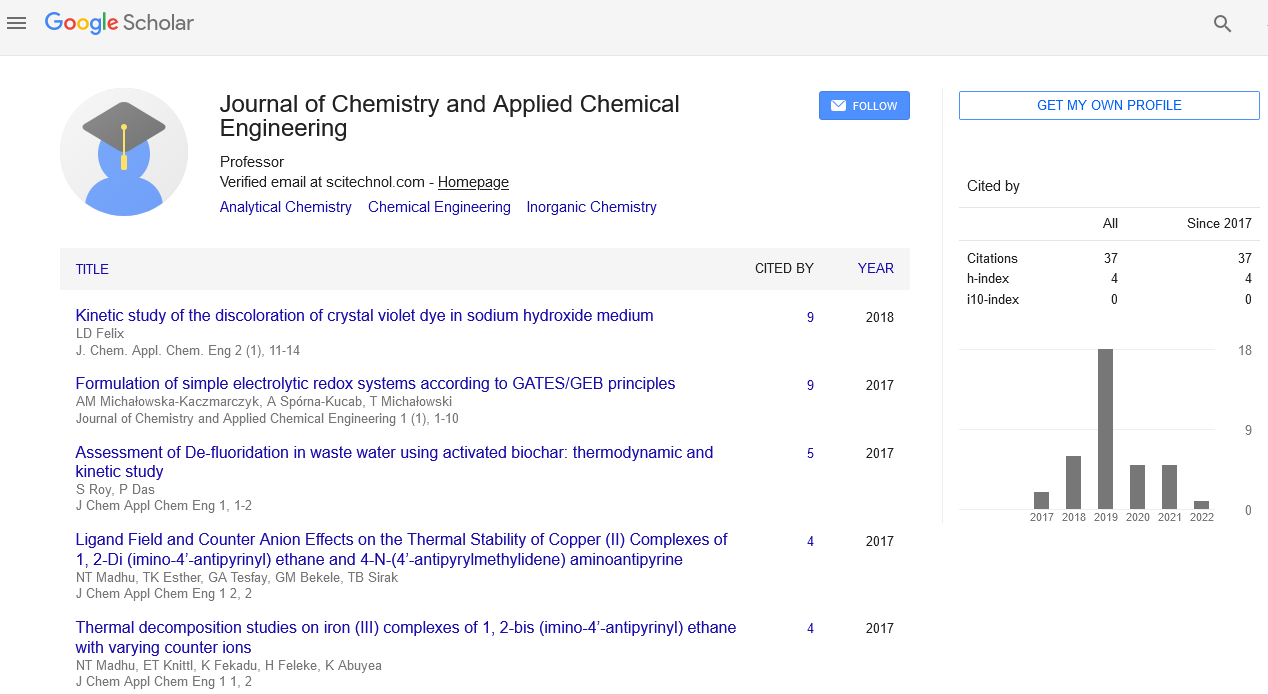Perspective, J Chem Appl Chem Eng Vol: 7 Issue: 3
Exploring Physical and Chemical Properties of Hydrocarbons
Rafel Kimlorik*
1Department of Molecular Physics, Lodz University of Technology, Lodz, Poland
*Corresponding Author: Rafel Kimlorik,
Department of Molecular Physics, Lodz
University of Technology, Lodz, Poland
E-mail: rafel1.kimlorik@gmail.com
Received date: 30 August, 2023, Manuscript No. JCACE-23-116792;
Editor assigned date: 01 September, 2023, Pre QC No. JCACE-23-116792(PQ);
Reviewed date: 15 September, 2023, QC No. JCACE-23-116792;
Revised date: 22 September, 2023, Manuscript No. JCACE-23-116792 (R);
Published date: 29 September, 2023, DOI: 10.4172/Jcace.1000034
Citation: Kimlorik R (2023) Exploring Physical and Chemical Properties of Hydrocarbons. J Chem Appl Chem Engl 7:3.
Description
Hydrocarbons are the backbone of organic chemistry, serving as the fundamental building blocks for a vast array of compounds that exist in the natural world and are synthesized in laboratories. These compounds are composed solely of Carbon (C) and Hydrogen (H) atoms, making them the simplest organic compounds. While hydrocarbons might seem straightforward, they exhibit a rich diversity of physical and chemical properties that are important to understanding their role in various chemical processes and applications.
Physical properties of hydrocarbons
Hydrocarbons exist in different physical states, depending on their molecular structure and the number of carbon and hydrogen atoms. They can be found as gases, liquids, or solids at room temperature. The melting and boiling points of hydrocarbons vary significantly depending on their molecular size and structure. Small hydrocarbons, such as Methane (CH4) and Ethene (C2H4), are gases at room temperature, while larger molecules like Octadecane (C18H38) are solid at room temperature. Hydrocarbons are generally nonpolar molecules, and their solubility in polar solvents, such as water, is limited. They are, however, soluble in nonpolar solvents, like other hydrocarbons. The density of hydrocarbons varies with their molecular weight and structure. Heavier hydrocarbons tend to be denser than lighter ones. Many hydrocarbons are colorless and odorless. However, some hydrocarbons, such as aromatic compounds like benzene, have distinct odors.
Chemical properties of hydrocarbons
One of the most well-known chemical properties of hydrocarbons is their combustibility. Hydrocarbons readily burn in the presence of oxygen, producing Carbon Dioxide (CO2) and water (H2O) as the primary combustion products. This property makes hydrocarbons essential for fuel applications, from gasoline to natural gas. Hydrocarbons can undergo various chemical reactions, including addition reactions, substitution reactions, and elimination reactions. For example, alkenes can undergo addition reactions with halogens, while aromatic hydrocarbons can undergo electrophilic aromatic substitution reactions. Hydrocarbons often exist as isomers, which are compounds with the same molecular formula but different structural arrangements. Isomerism is particularly common in hydrocarbons, providing a rich field for the study of structural and chemical differences. Aromatic hydrocarbons, such as benzene (C6H6), possess a unique form of stability due to their aromaticity. Aromatic compounds exhibit a planar ring structure and have a resonance stabilization that makes them less reactive than other hydrocarbons. Hydrocarbons can be polymerized to form larger molecules. For example, the polymerization of Ethene (C2H4) produces polyethylene, a widely used plastic material. This ability to form polymers is a key characteristic of hydrocarbons in the plastics industry.
Conclusion
Hydrocarbons are an essential class of compounds in organic chemistry, boasting a wide range of physical and chemical properties. Their simplicity in terms of composition is juxtaposed with their complexity in structure and behavior. Understanding these properties is vital not only for the study of organic chemistry but also for their applications in various industries, from energy production and fuel synthesis to pharmaceuticals and plastics. The diversity of hydrocarbons, their reactivity, and the array of chemical reactions they can undergo make them a cornerstone in the world of chemistry. Hydrocarbons can be hydrogenated, a process that involves adding hydrogen atoms to double or triple bonds. For example, the hydrogenation of unsaturated fats is essential in the food industry to convert liquid oils into solid fats.
 Spanish
Spanish  Chinese
Chinese  Russian
Russian  German
German  French
French  Japanese
Japanese  Portuguese
Portuguese  Hindi
Hindi 